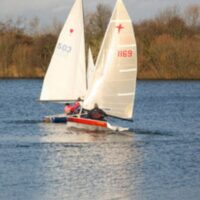Which Watercraft has the Right-of-Way?

Just as there are rules of the road drivers must follow, there are also rules of the waterways boat operators must comply with. Many of these pertain to which watercraft has the right-of-way when they are in the water. It is not always easy to determine who has the right-of-way on the water. Right-of-way is largely determined by the type of watercraft, how easy they are to maneuver, and the locations of the vessels.
It is critical to know which watercraft has the right-of-way, so you are not in an accident and do not sustain injury. Below, our Florida boat crash lawyer explains these laws further.
The Look-Out Rule
The look-out rule is outlined in Rule 5 of the Federal Navigation Rules. Under this law, anyone on the water is required to pay proper attention and take the necessary steps to avoid a crash at all times. As such, even when a boat operator has the right-of-way, they must still avoid an accident, if at all possible. If the boat captain who had the right-of-way could have avoided a crash but they failed to do so, they can still be held liable for an accident.
Two Power Watercrafts Approaching Each Other Head-On
Rule 5 also states that when two power watercrafts are approaching each other head-on, each boat operator must pay proper attention and be prepared to take the necessary action to avoid a crash. While neither vessel necessarily has the right-of-way, both boat operators must turn to starboard to avoid a crash. In certain circumstances, such as when the channel is narrow or one vessel has a restricted ability to maneuver (RAM), one boat operator may have the right-of-way.
Two Power Watercrafts Approaching Each Other at a 90-Degree Angle
When two power watercrafts are approaching each other at a 90-degree angle, the vessel on the port, or left, side must yield to the other. The vessel on the port side should do this by navigating behind the other vessel. Still, if doing so would violate the rules of the water, the other vessel must yield the right-of-way.
A Sailing Vessel and a Power Vessel Approaching Each Other
If a sailing vessel is under sail and it is approaching a power vessel, the power vessel must yield the right-of-way. This is because sailing vessels are more difficult to maneuver and cannot move as quickly as power vessels. If the sailing vessel is using its engine, the same rules for other scenarios must be followed.
Situations Involving RAMs
When one vessel is approaching a RAM, they are always required to yield the right-of-way. This is because RAMs such as cruise ships, cargo ships, and shrimping and fishing boats with their nets in the water cannot move as quickly as others.
Our Boat Crash Lawyer in Florida Can Advise You of the Law
At 888-BOAT-LAW, our Florida boat crash lawyer knows the law regarding these accidents. At The Law Offices of Frank D. Butler, PA, our experienced attorneys can advise you of the law to help you determine who was at fault for your crash and obtain the full settlement you deserve from them. Call us now or chat with us online to schedule a free consultation and to learn more about your legal options.
Source:
navcen.uscg.gov/navigation-rules-amalgamated#:~:text=Rule 5 – Lookout,of the risk of collision.
